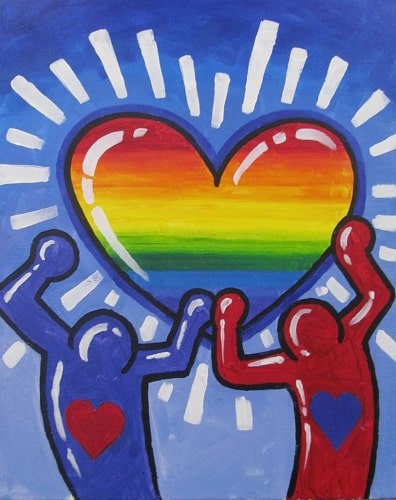by Pontus Silfverstolpe
The Art World’s Best Kept Secret
It is a late-summer night in the city where anything is possible. Small children have difficulty sleeping in the heat that makes bare arms and backs sweat. Fire hydrants shoot water into the street-lights’ glare and the city’s inhabitants have moved onto the streets.
The Growth of a Movement – with a New Canvas
Many more would follow in their footsteps. For some, it is an alternative to being idle or drawn inevitably to juvenile crime. For others, it is about self-expression, letting their creativity flow, and developing an artistic talent. While for others still, it is about seeking validation by having their modern rune inscriptions seen in as many places as possible.
Street art evolved. Tags became graffiti; graffiti became performance and installations. The art form shifted from subway cars to house walls. From crossroads to trendy art galleries and auctions around the world. Names such as Jean-Michel Basquiat and Keith Haring were picked up by Andy Warhol and his entourage. Suddenly the most serious collectors of contemporary painting wanted to surround themselves with what most people called vandalism and special police units tried to stop. Billions were spent fighting the strongest artistic movement of modern times; but no matter how they tried, the pieces were being shuffled around the board. Graffiti artists found new spaces on untrodden ground. Instead of putting their tags and the increasingly artistic designs on the outside of the subway cars, they covered the inside. Rapid bombings with tags returned as the conflict with the authorities escalated to a policy of zero tolerance in several countries. Around the same time, the English School of street art received more headlines. Above all, one name in particular appeared in the media more than any other: Banksy.
The Rise of a Master
The art of the Englishman, who initially worked mostly in Bristol, England, involves a very simple and direct message with elements of social criticism and politics. It quickly appealed to a wide audience – both children and the elderly. The purchasing public was split between various socioeconomic classes.
The longer Banksy’s career, the more expensive his work becomes in the secondary market. His art has gone from costing a couple of hundred dollars to several million. Steve Lazarides, Banksy’s former gallerist, sold screen prints costing the equivalent of $40 unsigned and $180 signed. The prices remained the same even though there was already a significantly more lucrative market. When they released new work, others were already waiting with their sales notices on eBay. In two minutes they were selling for $2,500 instead of $40.
The original paintings are even more expensive. Currently, $1 million will get you a signed Girl with Balloon in the secondary market. It originally sold for $300. When an original work featuring Girl with Balloon was partially shredded at Sotheby’s in one of the art world’s most notable art performances last year, in the middle of the auction itself, many art experts said the value immediately doubled. In addition, it became a coveted work of the future for museums, just seconds after being clubbed at auction.
Selling, Collecting, and Value
While an increasing number of art dealers can count themselves as millionaires in street art, the artists themselves continue to give their own cities art and public decoration without asking for anything in return.
Why is it so? Since none of the significant works have been sold at auction, the auction houses offer reserve prices that are too low, driving collectors to sell them in other ways. And so it will go on, as long as auction houses do not guarantee sellers a relevant amount. Most people who own a good Banksy know what they have and won’t sell unless they really have to. Or as Steve Lazarides puts it, “If someone offered me £1.2 million for one of the better paintings, then I’d shake my head. £2 million might get me thinking. £3?5 million might get me to lift it off the wall.”
When I ask Steve, former gallerist for the art world’s best-kept secret, about the prices, he replies that most street artists from the generation he worked with were never sponsored, never received stipends, grants or other benefits. Most of the street artists he knows financed their own art projects by selling their art. If it wasn’t so, most artists would be the children of wealthy people. The question becomes, how interesting would art be then?
Once the media hunted Banksy and Steve around the clock, hoping for a name or a picture. But soon they realized that if they were to reveal the anonymous artist the magic would be gone. And newspaper sales would drop.
Even in the US, some artists have achieved the same cult status for a wider audience. One of them is Shepard Fairey who became world-famous for making a poster of a black man. That man was Barack Obama, the first black president of the United States. Today the work hangs in the National Portrait Gallery, Washington D.C.









Related posts: